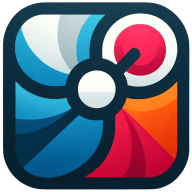6 Email Marketing Strategies to Support Customer Loyalty Programs
Unlock the secrets to fostering enduring customer relationships through targeted email marketing strategies. This article distills wisdom from leading experts to enhance your customer loyalty programs. Discover practical tips for personalization, clarity, and exclusive rewards that keep customers engaged and appreciative.
- Segment Your Email List
- Send Personalized Milestone Emails
- Keep Messages Simple and Clear
- Highlight Rewards Milestones
- Send Exclusive Reward Updates
- Send Quick Thank You Emails
Segment Your Email List
As the Founder and CEO of Nerdigital.com, I've seen firsthand how email marketing can be a game-changer for nurturing customer loyalty and driving the success of a rewards program. Over time, we've fine-tuned our approach to ensure that our email campaigns truly resonate with customers and keep them engaged in the long run.
One of the most effective tactics we've used is segmenting our email list based on customer behavior and engagement. By understanding where customers are in their journey—whether they've just made a purchase, earned loyalty points, or are actively engaging with our content—we can tailor our emails to match their specific needs and interests. For example, when someone earns a reward, we send them a personalized email with a clear call to action, such as redeeming their reward, exploring exclusive offers, or trying out new products. This level of personalization makes customers feel valued and motivates them to stay engaged with our program.
Another tactic that's worked well for us is sending timely and relevant reminders. We've set up automated emails that remind customers when they're close to earning a reward or when they have unused points that are about to expire. This creates a sense of urgency while also reminding customers of the value they're receiving by being part of our rewards program. It's not just about selling a product; it's about fostering a relationship and making customers feel appreciated.
We also make sure our emails don't feel overly promotional. Instead of focusing only on the rewards themselves, we highlight how our program enhances the overall customer experience. For example, we share customer success stories, behind-the-scenes insights into how we create our products, and other content that reinforces the community aspect of our brand.
Lastly, we track and analyze every email campaign to understand what works and what doesn't. We regularly measure open rates, click-through rates, and customer feedback to continuously refine our strategy. This data-driven approach ensures that we're always optimizing our efforts and improving how we engage with our loyal customers.
In summary, email marketing plays a crucial role in supporting our customer loyalty and rewards program. By personalizing content, sending timely reminders, and fostering an emotional connection, we've been able to build stronger relationships with our customers, turning them into long-term advocates of our brand.

Send Personalized Milestone Emails
Integrating email marketing with our loyalty program is key to building strong customer relationships. We send personalized milestone emails, like celebrating a customer's first anniversary with exclusive rewards, which make them feel valued. Storytelling is essential—we share real customer success stories to foster a sense of community and inspire engagement. Gamification elements, such as progress trackers and achievement badges, keep the rewards journey fun and interactive. Automated triggers ensure timely, relevant messages, from birthday perks to re-engagement offers. This strategic mix of personalization, storytelling, and automation not only enhances loyalty but also drives sustained business growth.
Keep Messages Simple and Clear
Email marketing is one of my go-to tools for boosting loyalty programs. I focus on keeping messages simple and clear. Highlighting rewards and showing progress motivates customers. Sending reminders about expiring points or exclusive deals keeps them engaged. Timing matters too-emails tied to birthdays or anniversaries feel personal and appreciated.
Segmenting the audience is key. Rewarding top spenders with special perks builds stronger connections. Offering sneak peeks or early access for loyal customers adds value. Testing subject lines and layouts also helps find what clicks with your audience. It's about staying relevant and rewarding their loyalty in meaningful ways.

Highlight Rewards Milestones
I use email marketing to support customer loyalty programs by sending personalized emails that highlight rewards milestones and exclusive offers. One effective tactic is sending birthday or anniversary emails with special discounts, making customers feel valued. Additionally, I send targeted emails that remind customers of unused rewards or offer bonus points for specific actions. These tactics increase engagement, enhance customer retention, and drive repeat purchases, as customers feel appreciated and incentivized to continue interacting with the brand.

Send Exclusive Reward Updates
We use email marketing to support our customer loyalty program by sending exclusive reward updates and tailored offers directly to members.
One effective tactic is early-access emails for sales or product launches, available only to loyalty members. These emails create a sense of exclusivity and encourage engagement.
Reminder emails about expiring rewards or unused points prompt quick action, driving repeat purchases.
Exclusive offers and timely reminders keep loyalty program members engaged, encourage repeat purchases, and build lasting relationships.

Send Quick Thank You Emails
Email marketing has been great for building loyalty by making customers feel valued. Sending quick "thank you" emails after rewards or milestones adds a personal touch. Highlighting top spenders or surprising customers with unexpected bonuses has also worked really well to keep engagement high.
Two key tactics: automate updates so customers never miss a reward, and make the messages feel meaningful. Instead of just saying "Here's your reward," share a small story about their impact or journey with your brand—it makes the experience stick.



